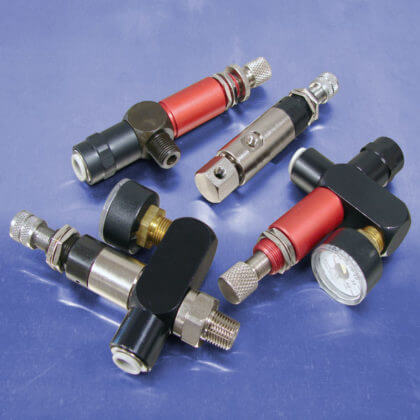
The Difference
Pressure Control Valves are ideal for applications requiring a reduced pressure to a cylinder whereas Pressure Regulators are used to maintain a pre-set downstream pressure.
Proper Installation
The Pressure Control Valve is designed for use between a valve output and a cylinder or other volume, where the reduced pressure is desired. A high volume check valve is built in to allow for rapid reverse flow. It is also ideal for continuous flow applications where reverse flow is not required.
A Pressure Regulator is installed before a valve to allow a pre-set pressure to flow downstream to a cylinder or other volume. Placing the regulator before the valve in a pneumatic system ensures that the regulator will not be cycled or exposed to reverse flow.
The primary purpose of a Pressure Regulator is to ensure that compressed air in a pneumatic system is not wasted. Installing a regulator that is too large for your system will increase air usage and waste energy. Therefore, properly sizing and setting your regulator is crucial for efficient air consumption.
To ensure that the appropriate regulator is used in your application, we recommend that you determine how much air the end actuator consumes to function properly (flow) and how much force is needed at that actuator (pressure). Using this information, select a regulator that meets your flow rate requirements and then set it for the pressure needed at the actuator. This simple process will result in efficient air usage and energy savings.
Another great way to reduce air consumption and save energy is to control cylinders with individual regulators rather than installing one large regulator. The purpose or job of the cylinder will determine the amount of force needed at that location in the application. Since these requirements can vary, installing individual regulators will allow you to set and use the exact amount of pressure required to accomplish the job.
Also Read: Difference between Flow Control & a Needle Valve
Learn the example of flip-flop PLC program for lamps application using the ladder logic to…
In this article, you will learn the STAR DELTA programming using PLC controller to start…
Lube oil consoles of rotary equipment packages in industrial process plants are usually equipped with…
Rotating equipment packages such as pumps, compressors, turbines need the lube oil consoles for their…
This article explains how to blink lights in ladder logic with a detailed explanation video…
In this article, a simple example will teach you the conversion from Boolean algebra to…